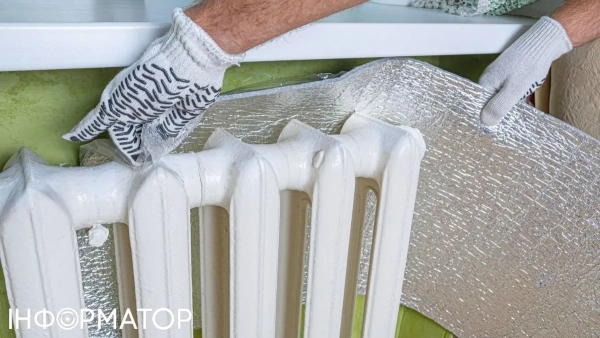“Foil behind the battery Photo: Getty Images In the heating season, especially during power outages, many people think about how to keep the heat in the house and heat it as efficiently as possible. Placing the foil behind the radiator is indeed right, but only if it is done correctly. Such a simple method can reduce heat loss by 10-15% and really contributes to savings […]”, — write: businessua.com.ua

Foil behind the battery Photo: Getty Images
During the heating season, especially during power outages, many people think about how to keep the heat in the house and heat it as efficiently as possible. Placing the foil behind the radiator is indeed right, but only if it is done correctly. Such a simple method can reduce heat loss by 10-15% and really helps to save on heating, especially in old buildings with thin outer walls.
How this method works Heating radiators transfer heat in two main ways — convection and radiation. In the case of convection, the air warms up near the battery, rises up, and cooler air comes in its place. Radiation is heat waves that the battery spreads in different directions, including in the direction of the wall. If the radiator is located on an external wall, some of this heat can actually escape to the outside, especially when the wall is thin or poorly insulated.
A foil or heat-reflective screen reflects this part of the heat radiation back into the room, resulting in more energy remaining inside. The effect is small, but noticeable – in old buildings or apartments with cold walls, it is possible to reduce heat loss by several percent.
When it’s relevant It is not always advisable to install foil behind the radiator. It works effectively only under certain circumstances:
- if the radiator is on the outer wall;
- if the wall is thin, old or without insulation;
- if the radiator is really warm and has good heat transfer;
- if there is a small air gap between the foil and the radiator, and not direct contact;
- if not kitchen foil is used, but a special foil insulation.
In such cases, foil can reduce heat loss by 5–10%.
When foil won’t help If the wall is well insulated or the radiator is modern (for example, aluminum or bimetallic), the result will be minimal — 1-2% or not noticeable at all. Improperly installed foil that tightly adheres to the radiator or has folds will not bring results. Also, you should not expect a significant difference in rooms with central heating, where the temperature of radiators is often regulated by the overall system, and not individually.
How to correctly install the foil To get at least some result, the foil or heat-reflective screen must be mounted correctly:
Is it necessary to install foil behind the radiator? If you have an old building, the outer wall is thin and the radiator is placed directly next to it – yes, foil can be useful. It will help reduce heat loss and slightly raise the temperature in the room without additional costs. If you have a new building or an insulated facade, the effect will be minimal, and it is better to pay attention to other ways of increasing energy efficiency: insulating windows and doors, eliminating drafts and adjusting the heating system.
As the Informant reported, interest in how long different types of housing are able to store heat is growing in Ukraine against the background of possible heat supply interruptions. This indicator is influenced by the materials of the walls, the thickness of the structures, the quality of insulation and the tightness of the windows. Experts claim that the difference between houses can reach more than ten hours, so residents of different types of housing find themselves in unequal conditions. Panel houses lose heat the fastest, because thin concrete walls and weak thermal insulation do not provide adequate resistance to the cold, on the other hand, new buildings lose heat the slowest if the insulation is done well.
The source
Please wait…
